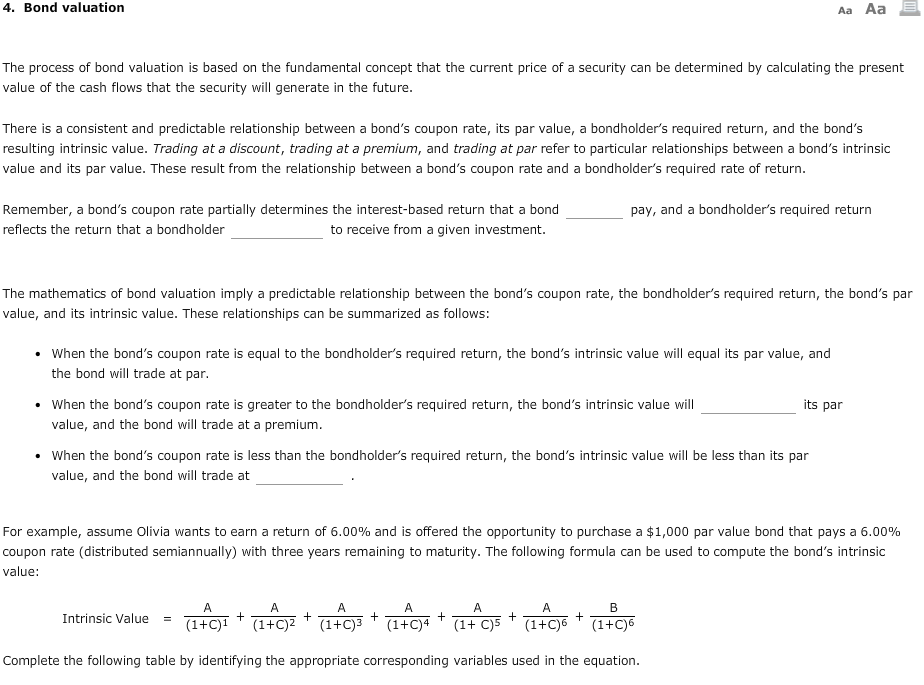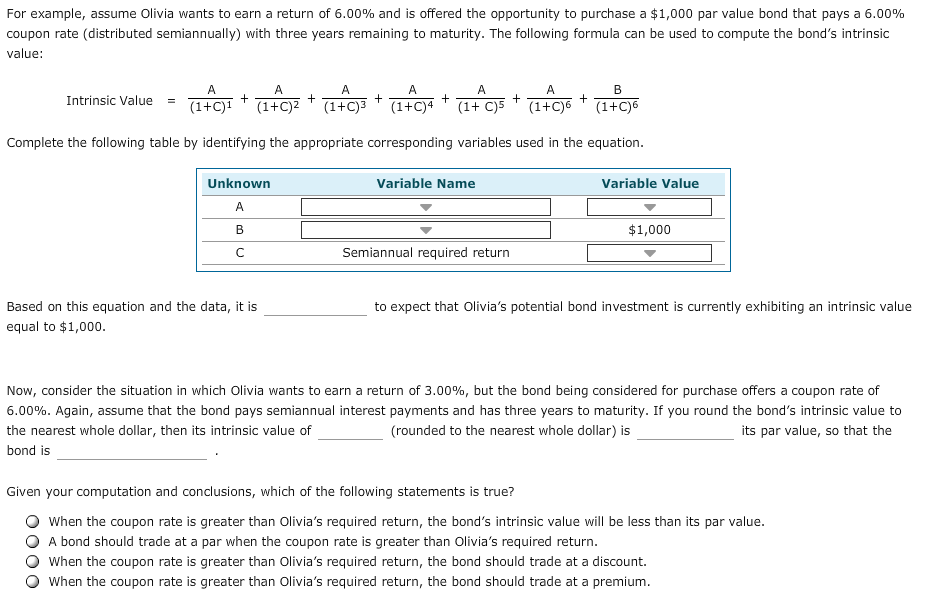return that a bond WILL or MIGHT pay...
return that a bondholder WOULD LIKE or IS OBLIGATED to receive...
intrinsic value will EXCEED, BE LESS THAN, or EQUAL its par value...
and the bond will trade at PAR, A PREMIUM, or A DISCOUNT
Variable name:
opttion A: bond's annual coupon payment, bond's semiannual coupon payment, or bond's market price
option B: bond's market price, bond's par value, bond's annual coupon payment
Variable Value:
optiion A: $30, $15, $45, or $120
option C: 5.7525%, 6.0000%, 3.0000%, or 4.3750%
It is UNREASONABLE or REASONABLE to expect that...


4. Bond valuation Aaa Aa The process of bond valuation is based on the fundamental concept that the current price of a security can be determined by calculating the present value of the cash flows that the security will generate in the future There is a consistent and predictable relationship between a bond's coupon rate, its par value, a bondholder's required return, and the bond's resulting intrinsic value. Trading at a discount, trading at a premium, and trading at par refer to particular relationships between a bond's intrinsic value and its par value. These result from the relationship between a bond's coupon rate and a bondholder's required rate of return Remember, a bond's coupon rate partially determines the interest-based return that a bond pay, and a bondholder's required return reflects the return that a bondholder to receive from a given investment The mathematics of bond valuation imply a predictable relationship between the bond's coupon rate, the bondholder's required return, the bond's par value, and its intrinsic value. These relationships can be summarized as follows: When the bond's coupon rate is equal to the bondholder's required return, the bond's intrinsic value will equal its par value, and the bond will trade at par When the bond's coupon rate is greater to the bondholders required return, the bond's intrinsic value will its par value, and the bond will trade at a premium When the bond's coupon rate is less than the bondholder's required return, the bond's intrinsic value will be less than its par value, and the bond will trade at For example, assume Olivia wants to earn a return of 6.00% and is offered the opportunity to purchase a $1,000 par value bond that pays a 6.00% coupon rate (distributed semiannually) with three years remaining to maturity. The following formula can be used to compute the bond's intrinsic Value Intrinsic Value Complete the following table by identifying the appropriate corresponding variables used in the equation








